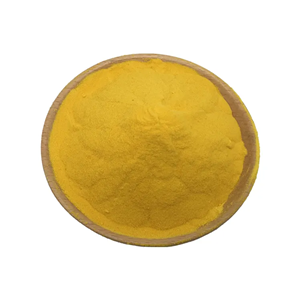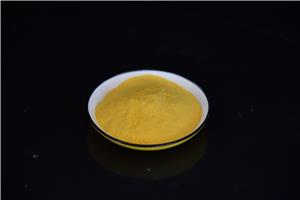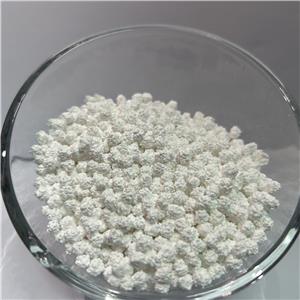After Extreme Weather Events, the Application of Magnesium Sulfate in Agricultural Post-Disaster Reconstruction: The Key to Rapid Crop Growth Recovery
06-08-2025
In recent years, extreme weather events have occurred frequently worldwide. Disasters such as heavy rains, floods, droughts, and hailstorms not only directly destroy crops but also cause long-term damage to soil structure and nutrient balance. According to data from the Food and Agriculture Organization of the United Nations (FAO), the global crop yield reduction caused by extreme weather in 2023 exceeded 120 million tons, among which soil nutrient loss is one of the core reasons why crops are difficult to recover after disasters. In this context, magnesium sulfate, as an efficient magnesium supplement, is becoming a "key force" in rapidly restoring crop growth in agricultural post-disaster reconstruction.
The damage of extreme weather to soil and crops often has a chain reaction. Taking flood disasters as an example, continuous rainfall will lead to the massive loss of water-soluble nutrients (such as magnesium, potassium, calcium, etc.) in the soil with water flow, resulting in soil "nutrient deficiency syndrome"; at the same time, waterlogging will destroy the soil aggregate structure, leading to reduced air permeability and root hypoxia and rot. Drought weather, on the other hand, will make the soil compacted, and magnesium elements are solidified in soil colloids, unable to be absorbed by crop roots, eventually showing symptoms such as leaf yellowing, growth stagnation, and reduced fruiting rate.
The reason why magnesium sulfate can play a core role in post-disaster reconstruction lies in its unique chemical properties and agricultural value. Magnesium is a core component of plant chlorophyll and is directly involved in photosynthesis; at the same time, it is also an activator of various enzymes, affecting protein synthesis and nutrient transport. The effective magnesium content in the soil after disasters usually decreases by 30% - 50%, and magnesium sulfate (especially heptahydrate magnesium sulfate) has the characteristics of high water solubility and easy absorption, which can quickly supplement the magnesium elements needed by the soil and crops, and alleviate the "magnesium deficiency syndrome".
In practical applications, the use of magnesium sulfate needs to be flexibly adjusted according to the type of disaster. For soil after flood disasters, a combined scheme of "base fertilizer + foliar spraying" can be adopted: 5 - 10 kg of magnesium sulfate per mu is applied as base fertilizer, combined with deep ploughing to improve soil air permeability; at the same time, dilute magnesium sulfate into a 0.5% - 1% solution for foliar spraying, once every 3 - 5 days, for 2 - 3 consecutive times, which can quickly alleviate symptoms such as yellowing and curling of crop leaves. For compacted soil after drought disasters, it is recommended to first loosen the soil through irrigation, and then mix magnesium sulfate with organic fertilizer for application. The buffering effect of organic fertilizer can improve the effectiveness of magnesium elements and promote root recovery and growth.
Agricultural practices in many countries have confirmed the significant effect of magnesium sulfate in post-disaster reconstruction. After the once-in-a-century flood disaster in the Chao Phraya River Basin in Thailand in 2023, local farmers used magnesium sulfate combined with other fertilizers for soil remediation. The rice fields recovered to normal growth within 45 days after the disaster, and the per-mu yield increased by 27% compared with the untreated area; in the same year, after applying magnesium sulfate in olive groves in arid areas in southern Spain, the chlorophyll content in leaves increased by 34%, and the fruit plumpness was significantly improved.
Agricultural experts point out that soil remediation after extreme weather needs to seize the "golden recovery period", and the rapid magnesium supplementation characteristics of magnesium sulfate exactly meet this demand. "The timely supplementation of magnesium can enable crops to resume photosynthesis in the shortest time after the disaster and accumulate energy for subsequent growth," emphasized Dr. Elena Santos, a researcher at the International Magnesium Fertilizer Institute (IMI), in the latest report. "Compared with traditional magnesium fertilizers, magnesium sulfate has a higher cost performance and is suitable for various soil types, making it an economical and efficient choice for post-disaster reconstruction."
With the increasing uncertainty of the global climate, the construction of agricultural disaster resistance capacity has become the focus of attention of all countries. As a multi-functional agricultural product, magnesium sulfate not only plays a key role in post-disaster reconstruction but also its application in daily agricultural production can enhance the stress resistance of crops (such as drought resistance and disease resistance), reducing losses caused by extreme weather from the source.
For agricultural practitioners, scientifically storing magnesium sulfate and mastering post-disaster application technologies will become important means to cope with climate change and ensure food security. In the future sustainable development of agriculture, the value of efficient nutrient supplements such as magnesium sulfate will become increasingly prominent with the increase in extreme weather events.




